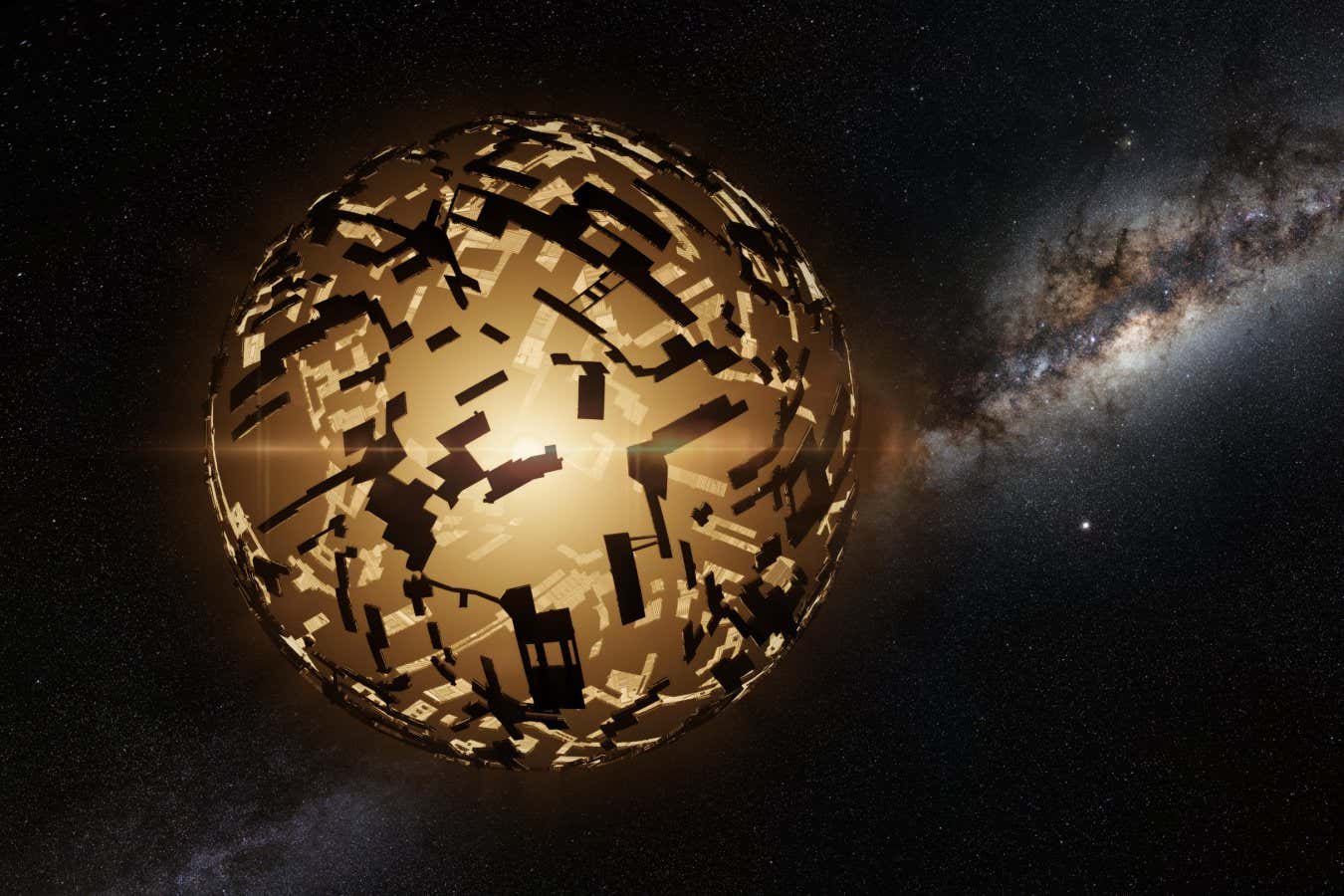- cross-posted to:
- [email protected]
- cross-posted to:
- [email protected]
Two surveys of millions of stars in our galaxy have revealed mysterious spikes in infrared heat coming from dozens of them. Astronomers say this could be evidence for alien civilisations harnessing energy from their stars by using a vast construction known as a Dyson sphere – although they can’t fully rule out more mundane explanations.
First proposed in the 1960s, Dyson spheres are hypothesised structures that could surround entire stars to absorb their energy, a possible means by which advanced aliens might draw huge amounts of power. If such objects exist, they should be warm enough to give off a detectable infrared glow – a “technosignature” that could alert us to the presence of alien life.
To search for potential Dyson spheres, two teams of astronomers, one led by Matías Suazo at Uppsala University in Sweden and the other by Gaby Contardo at the International School for Advanced Studies in Italy, combined data from the European Space Agency’s Gaia satellite – which is mapping the position and motion of billions of stars in our galaxy – with infrared survey results from ground and space telescopes.
Each team analysed the same 5 million stars from the combined datasets, and both turned up signs of excess infrared heat that couldn’t be explained by known natural processes. “The most fascinating explanation could be actual Dyson spheres,” says Suazo.
His team spotted strange signals at seven red dwarfs within 900 light-years of Earth. These stars are smaller and dimmer than our sun, but appeared up to 60 times brighter in infrared than expected.
This excess would have been caused by something with a temperature of up to 400°C, consistent with what we might expect for a Dyson sphere. Up to 16 per cent of each star would have to be obscured to account for the signal, meaning it would more likely be a variant of the idea called a Dyson swarm – a collection of large satellites orbiting a star to collect energy – if the cause is truly of artificial origin. “This isn’t like a single solid shell around the star,” says team member Jason Wright at Pennsylvania State University.
Contardo’s results are broader, with 53 candidates found among larger stars, including some sun-like stars, at distances of up to 6500 light years from Earth. “Both sets of candidates are interesting,” she says, though inconclusive. “You need follow-up observations to confirm anything.”
One natural explanation that could mimic the properties of a Dyson sphere is that the stars are surrounded by hot, planet-forming debris disks, but most of the stars found by both teams appear to be too old for this. Another possibility is that each star could coincidentally be positioned in front of a distant galaxy giving off an infrared glow.
The infrared signals could also result from some unknown natural process. “It might be something that happens very rarely, like if two planets collide and produce an enormous amount of material,” says David Hogg at New York University, who worked with Contardo. “I think it’s most likely to be a natural phenomenon.”
The James Webb Space Telescope could shed further light on these stars, revealing if the infrared heat comes from natural dusty material or something else.
“Either we’ll rule them all out and say Dyson spheres are quite rare and very hard to find, or they’ll hang around as candidates and we’ll study the heck out of them,” says Wright.



A boats a boat but the mystery box could be anything! Even a boat!